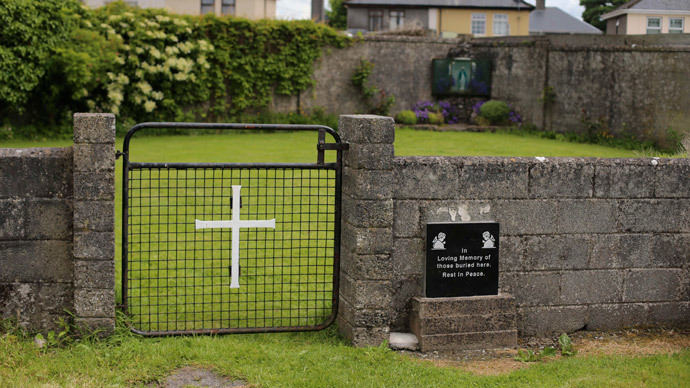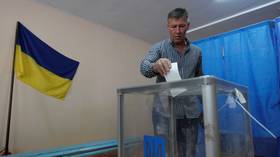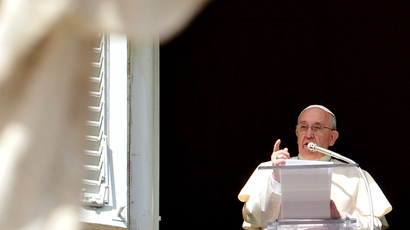Mass babies’ grave scandal pushes Irish govt, Catholic Church toward inquiry

The Irish government is under pressure to order an inquiry into a recently uncovered mass grave for almost 800 children who died at a Catholic Church facility for unwed mothers and their children. Most of the bodies were dumped in a sewage tank.
The mass, unmarked grave in the town of Tuan, western Ireland, was unveiled by a local historian, Catherine Corless, who was gathering information on the mother-and-baby home which functioned there in the first half of the 20th century, run by the Bon Secours order of nuns.
Back then, unmarried pregnant women were ostracized by
conservative Irish society and sent away to special church-run
institutions, where mothers often had to engage in unpaid hard
labor, while their children were taken away from them to be
either adopted or raised in orphanages.
The burial place appeared to be one for the children who died at
the facility.
“I was dismayed to find that in fact the number of children
who died in the Home during its existence 1925-1961 numbered
nearly 800,” Corless wrote on Facebook, commenting on her
research. “I now have all those children’s names, date of
death, and age at death, which will be recorded into a special
book.”
A photo of some of the children at "the Home" in 1924 (Connaught Tribune, 21st June 1924) pic.twitter.com/foGFqAKJ8m
— Limerick1914 (@Limerick1914) May 27, 2014
Locals first learned of the mass burials in the 1970s. By that
time the home for mothers and babies had been closed and the area
turned in a residential one. Two boys accidentally broke apart
the concrete slab over the mass grave and discovered little
skeletons there. The place was then sealed again, but still
remained unmarked for decades.
Corless is now engaged in a fundraising effort to get the place
marked with a monument bearing all of the 769 names of the dead
children. She says they died of malnutrition and neglect. A
sewage tank served as a graveyard.
“If you look at the records, babies were dying two a week,
but I’m still trying to figure out how they could [put the bodies
in a septic tank],” Corless told the Irish Mail.
“Couldn’t they have afforded baby coffins?”
"Harrowing details" as Children's Minister Charlie
Flanagan put it, of burial arrangements for children at the
church-run institutions, have led to calls for an inquiry into
what happened decades ago.
"Many of the revelations are deeply disturbing and a shocking
reminder of a darker past in Ireland when our children were not
cherished as they should have been," Flanagan said in a
statement cited by Reuters. A government report on the scandal is
expected by the end of June.
Very few photos of Tuam Home exist, on the left of this picture you can see the wall of the site on the Athenry Road pic.twitter.com/0LbatHFeFv
— Gerard Murphy (@gfmurphy101) May 30, 2014
Labor senator Lorraine Higgins has called for the Catholic Church
to reveal more details of the incident.
“Now is the time for the church authorities to tell us where
the rest of the bodies are,” Higgins said, The Irish Times
reported. “We need to know how many died in each of these
homes throughout the country. We need details about each one of
these children and where their resting places are.”
The Archbishop of Tuam, Michael Neary, said that the diocese was
not running the home. He told the order of nuns who did that it
must co-operate with any inquiry into the discovery.
"Regardless of the time lapse involved, this is a matter of
great public concern which ought to be acted upon urgently,"
Neary said.
Archbishop of Dublin, Diarmuid Martin, told The Irish Examiner he
would support exhumation of the children’s bodies if necessary
for the investigation.
It’s not the first time that the Catholic Church in Ireland has
found itself under fire over inhuman practices in its
institutions in the past.
A year ago the Irish government agreed to pay up 58 million euros
($75 million) in compensation to hundreds of women, who were
forced to work at the notorious Magdalene Laundries, also run by
the Catholic Church. A teenage girl or young woman could be sent
to the laundries just over suspicions that her behavior could be
contrary to the Church’s conservative morals. The inmates at the
institutions, run by Catholic nuns, were forced to do physically
demanding work while living in prison-like conditions.














